Yury Polyanskiy
Synchronization of mean-field models on the circle
Jul 30, 2025Abstract:This paper considers a mean-field model of $n$ interacting particles whose state space is the unit circle, a generalization of the classical Kuramoto model. Global synchronization is said to occur if after starting from almost any initial state, all particles coalesce to a common point on the circle. We propose a general synchronization criterion in terms of $L_1$-norm of the third derivative of the particle interaction function. As an application we resolve a conjecture for the so-called self-attention dynamics (stylized model of transformers), by showing synchronization for all $\beta \ge -0.16$, which significantly extends the previous bound of $0\le \beta \le 1$ from Criscitiello, Rebjock, McRae, and Boumal (2024). We also show that global synchronization does not occur when $\beta < -2/3$.
Quantitative Clustering in Mean-Field Transformer Models
Apr 20, 2025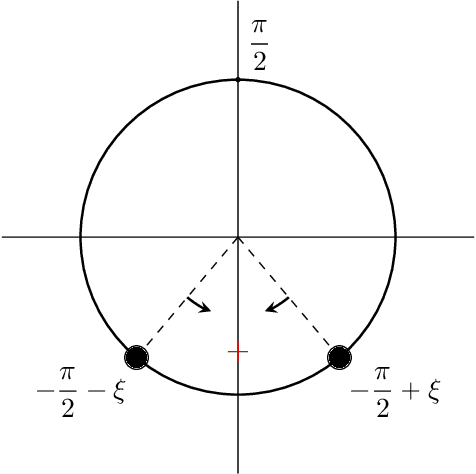
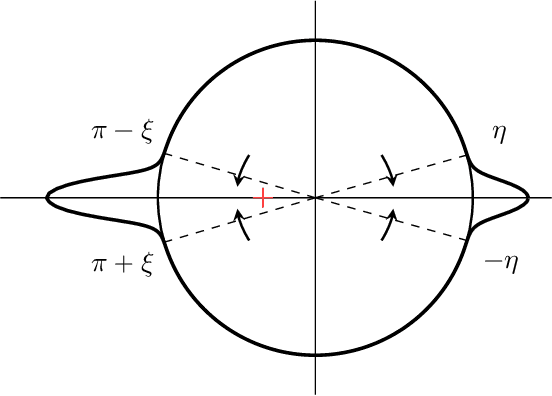
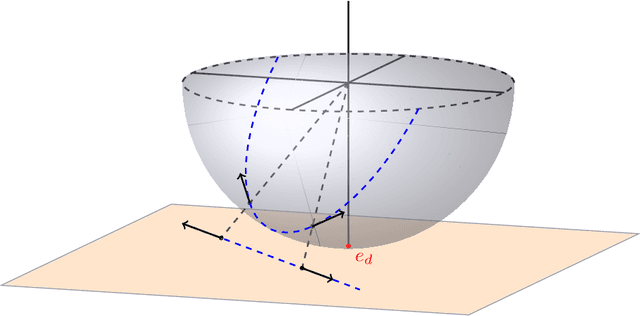
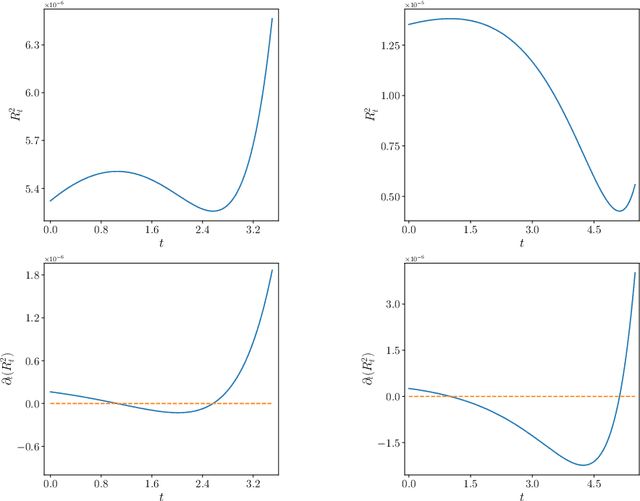
Abstract:The evolution of tokens through a deep transformer models can be modeled as an interacting particle system that has been shown to exhibit an asymptotic clustering behavior akin to the synchronization phenomenon in Kuramoto models. In this work, we investigate the long-time clustering of mean-field transformer models. More precisely, we establish exponential rates of contraction to a Dirac point mass for any suitably regular initialization under some assumptions on the parameters of transformer models, any suitably regular mean-field initialization synchronizes exponentially fast with some quantitative rates.
Nonparametric MLE for Gaussian Location Mixtures: Certified Computation and Generic Behavior
Mar 26, 2025Abstract:We study the nonparametric maximum likelihood estimator $\widehat{\pi}$ for Gaussian location mixtures in one dimension. It has been known since (Lindsay, 1983) that given an $n$-point dataset, this estimator always returns a mixture with at most $n$ components, and more recently (Wu-Polyanskiy, 2020) gave a sharp $O(\log n)$ bound for subgaussian data. In this work we study computational aspects of $\widehat{\pi}$. We provide an algorithm which for small enough $\varepsilon>0$ computes an $\varepsilon$-approximation of $\widehat\pi$ in Wasserstein distance in time $K+Cnk^2\log\log(1/\varepsilon)$. Here $K$ is data-dependent but independent of $\varepsilon$, while $C$ is an absolute constant and $k=|supp(\widehat{\pi})|\leq n$ is the number of atoms in $\widehat\pi$. We also certifiably compute the exact value of $|supp(\widehat\pi)|$ in finite time. These guarantees hold almost surely whenever the dataset $(x_1,\dots,x_n)\in [-cn^{1/4},cn^{1/4}]$ consists of independent points from a probability distribution with a density (relative to Lebesgue measure). We also show the distribution of $\widehat\pi$ conditioned to be $k$-atomic admits a density on the associated $2k-1$ dimensional parameter space for all $k\leq \sqrt{n}/3$, and almost sure locally linear convergence of the EM algorithm. One key tool is a classical Fourier analytic estimate for non-degenerate curves.
Residual connections provably mitigate oversmoothing in graph neural networks
Jan 04, 2025



Abstract:Graph neural networks (GNNs) have achieved remarkable empirical success in processing and representing graph-structured data across various domains. However, a significant challenge known as "oversmoothing" persists, where vertex features become nearly indistinguishable in deep GNNs, severely restricting their expressive power and practical utility. In this work, we analyze the asymptotic oversmoothing rates of deep GNNs with and without residual connections by deriving explicit convergence rates for a normalized vertex similarity measure. Our analytical framework is grounded in the multiplicative ergodic theorem. Furthermore, we demonstrate that adding residual connections effectively mitigates or prevents oversmoothing across several broad families of parameter distributions. The theoretical findings are strongly supported by numerical experiments.
Clustering in Causal Attention Masking
Nov 07, 2024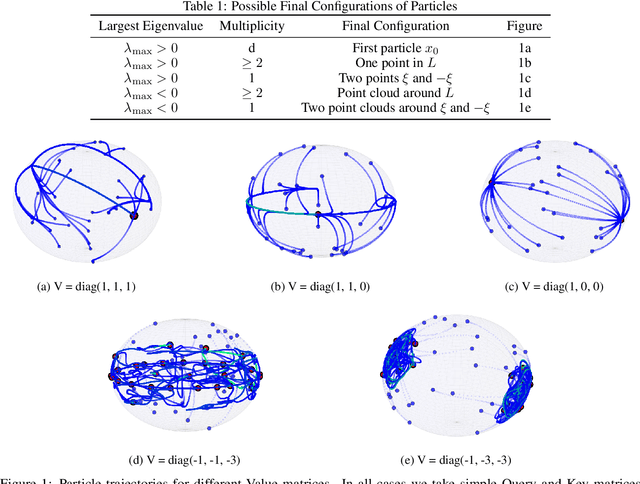
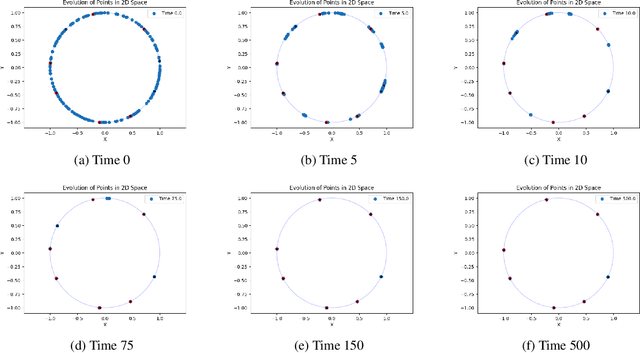
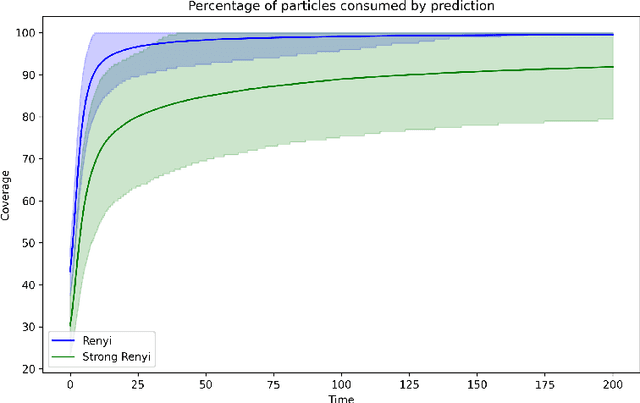
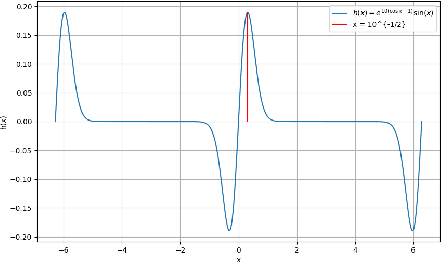
Abstract:This work presents a modification of the self-attention dynamics proposed by Geshkovski et al. (arXiv:2312.10794) to better reflect the practically relevant, causally masked attention used in transformer architectures for generative AI. This modification translates into an interacting particle system that cannot be interpreted as a mean-field gradient flow. Despite this loss of structure, we significantly strengthen the results of Geshkovski et al. (arXiv:2312.10794) in this context: While previous rigorous results focused on cases where all three matrices (Key, Query, and Value) were scaled identities, we prove asymptotic convergence to a single cluster for arbitrary key-query matrices and a value matrix equal to the identity. Additionally, we establish a connection to the classical R\'enyi parking problem from combinatorial geometry to make initial theoretical steps towards demonstrating the existence of meta-stable states.
Optimal Quantization for Matrix Multiplication
Oct 17, 2024Abstract:Recent work in machine learning community proposed multiple methods for performing lossy compression (quantization) of large matrices. This quantization is important for accelerating matrix multiplication (main component of large language models), which is often bottlenecked by the speed of loading these matrices from memory. Unlike classical vector quantization and rate-distortion theory, the goal of these new compression algorithms is to be able to approximate not the matrices themselves, but their matrix product. Specifically, given a pair of real matrices $A,B$ an encoder (compressor) is applied to each of them independently producing descriptions with $R$ bits per entry. These representations subsequently are used by the decoder to estimate matrix product $A^\top B$. In this work, we provide a non-asymptotic lower bound on the mean squared error of this approximation (as a function of rate $R$) for the case of matrices $A,B$ with iid Gaussian entries. Algorithmically, we construct a universal quantizer based on nested lattices with an explicit guarantee of approximation error for any (non-random) pair of matrices $A$, $B$ in terms of only Frobenius norms $\|A\|_F, \|B\|_F$ and $\|A^\top B\|_F$. For iid Gaussian matrices our quantizer achieves the lower bound and is, thus, asymptotically optimal. A practical low-complexity version of our quantizer achieves performance quite close to optimal. In information-theoretic terms we derive rate-distortion function for matrix multiplication of iid Gaussian matrices.
Dynamic metastability in the self-attention model
Oct 09, 2024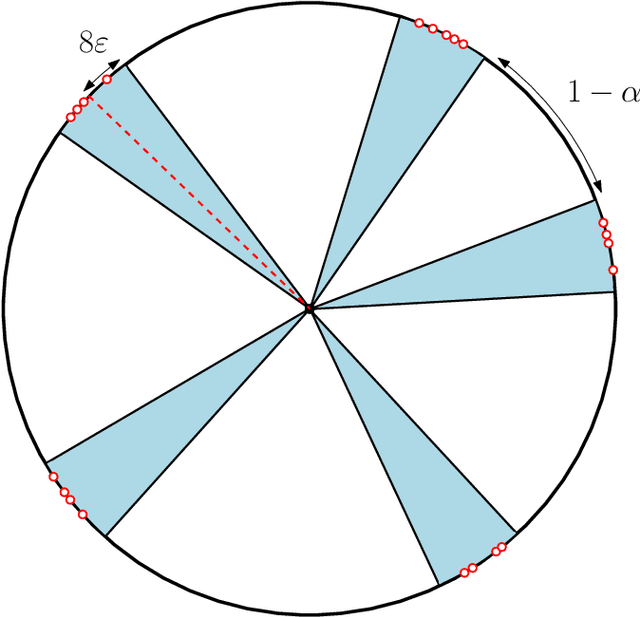

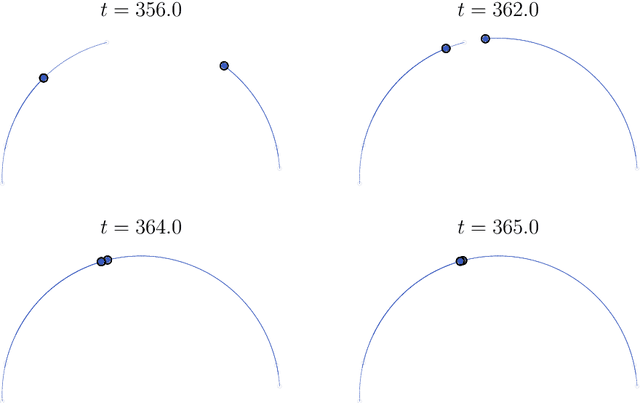

Abstract:We consider the self-attention model - an interacting particle system on the unit sphere, which serves as a toy model for Transformers, the deep neural network architecture behind the recent successes of large language models. We prove the appearance of dynamic metastability conjectured in [GLPR23] - although particles collapse to a single cluster in infinite time, they remain trapped near a configuration of several clusters for an exponentially long period of time. By leveraging a gradient flow interpretation of the system, we also connect our result to an overarching framework of slow motion of gradient flows proposed by Otto and Reznikoff [OR07] in the context of coarsening and the Allen-Cahn equation. We finally probe the dynamics beyond the exponentially long period of metastability, and illustrate that, under an appropriate time-rescaling, the energy reaches its global maximum in finite time and has a staircase profile, with trajectories manifesting saddle-to-saddle-like behavior, reminiscent of recent works in the analysis of training dynamics via gradient descent for two-layer neural networks.
RF Challenge: The Data-Driven Radio Frequency Signal Separation Challenge
Sep 13, 2024



Abstract:This paper addresses the critical problem of interference rejection in radio-frequency (RF) signals using a novel, data-driven approach that leverages state-of-the-art AI models. Traditionally, interference rejection algorithms are manually tailored to specific types of interference. This work introduces a more scalable data-driven solution and contains the following contributions. First, we present an insightful signal model that serves as a foundation for developing and analyzing interference rejection algorithms. Second, we introduce the RF Challenge, a publicly available dataset featuring diverse RF signals along with code templates, which facilitates data-driven analysis of RF signal problems. Third, we propose novel AI-based rejection algorithms, specifically architectures like UNet and WaveNet, and evaluate their performance across eight different signal mixture types. These models demonstrate superior performance exceeding traditional methods like matched filtering and linear minimum mean square error estimation by up to two orders of magnitude in bit-error rate. Fourth, we summarize the results from an open competition hosted at 2024 IEEE International Conference on Acoustics, Speech, and Signal Processing (ICASSP 2024) based on the RF Challenge, highlighting the significant potential for continued advancements in this area. Our findings underscore the promise of deep learning algorithms in mitigating interference, offering a strong foundation for future research.
A mathematical perspective on Transformers
Dec 22, 2023



Abstract:Transformers play a central role in the inner workings of large language models. We develop a mathematical framework for analyzing Transformers based on their interpretation as interacting particle systems, which reveals that clusters emerge in long time. Our study explores the underlying theory and offers new perspectives for mathematicians as well as computer scientists.
Kernel-Based Tests for Likelihood-Free Hypothesis Testing
Aug 17, 2023Abstract:Given $n$ observations from two balanced classes, consider the task of labeling an additional $m$ inputs that are known to all belong to \emph{one} of the two classes. Special cases of this problem are well-known: with complete knowledge of class distributions ($n=\infty$) the problem is solved optimally by the likelihood-ratio test; when $m=1$ it corresponds to binary classification; and when $m\approx n$ it is equivalent to two-sample testing. The intermediate settings occur in the field of likelihood-free inference, where labeled samples are obtained by running forward simulations and the unlabeled sample is collected experimentally. In recent work it was discovered that there is a fundamental trade-off between $m$ and $n$: increasing the data sample $m$ reduces the amount $n$ of training/simulation data needed. In this work we (a) introduce a generalization where unlabeled samples come from a mixture of the two classes -- a case often encountered in practice; (b) study the minimax sample complexity for non-parametric classes of densities under \textit{maximum mean discrepancy} (MMD) separation; and (c) investigate the empirical performance of kernels parameterized by neural networks on two tasks: detection of the Higgs boson and detection of planted DDPM generated images amidst CIFAR-10 images. For both problems we confirm the existence of the theoretically predicted asymmetric $m$ vs $n$ trade-off.
 Add to Chrome
Add to Chrome Add to Firefox
Add to Firefox Add to Edge
Add to Edge